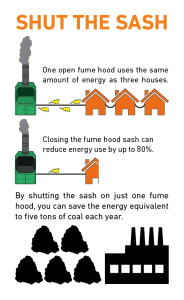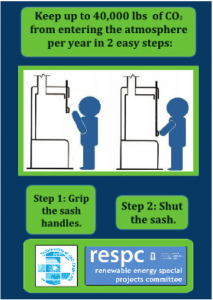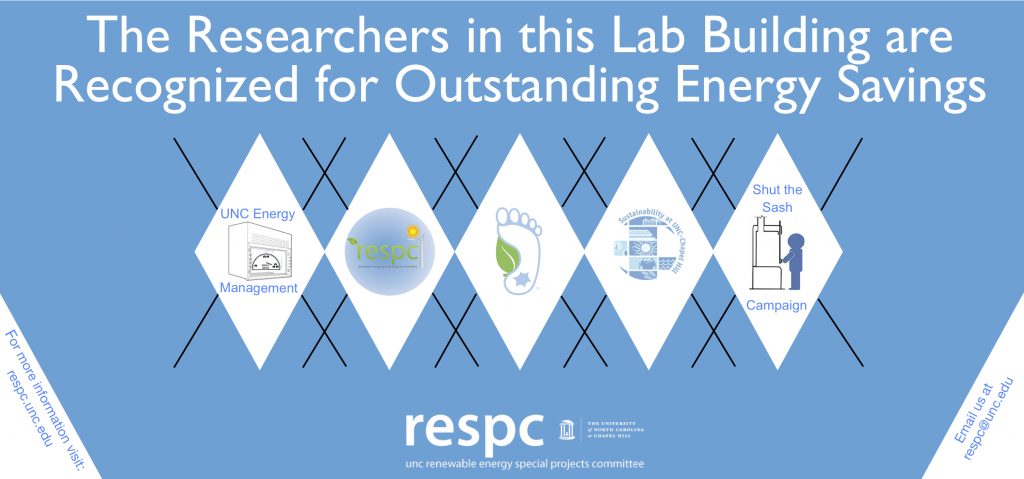Shut the Sash Campaign
Laboratory safety is one of the most important elements of a lab, enacted to ensure the health and safety of all lab personnel.

For lab safety and experiment sterility, the fume hood is an important piece of equipment: it creates localized ventilation by siphoning exhaust from an air-sealed enclosure.
There are benefits and costs to this equipment, however. When the fume hood’s sash is open, an airfoil and the exhaust duct create a ventilated enclosure where fumes or hazards created during an experiment are removed from the workspace of the fume hood and displaced into the atmosphere. This protects the lab from toxic hazards and creates a sterile environment for experiments, but it also releases massive quantities of unchecked emissions from exhaust ducts, increases demands on heating, ventilation, and air conditioning (HVAC) as the exhaust pulls air from the laboratory, and extensive energy demand from both the equipment and the increased HVAC demands.
Around UNC’s campus, there are a few hundred fume hoods. There are three main types of fume hoods: constant air volume (CAV), variable air volume (VAV), and manifold. A variable air volume fume hood can use the same amount of energy as four typical American households. Considering a variable air volume fume hood is more energy-efficient than the more common constant air volume fume hood, any effort to reduce energy consumption of a lab’s fume hoods is beneficial to the lab’s efficiency and cost-savings as well as the environment. Shutting the sash can also increase lab safety by protecting the air quality of the general lab environment.

In 2010, Energy Management and other departments at UNC hosted the inaugural “Shut the Sash” campaign.
Targeting three new campus lab buildings, this campaign encouraged lab personnel to shut their fume hood sashes when not in use. The campaign predominantly focused on encouraging labs to shut the sash when the lab was not in use— at night, over the weekend, and while on holidays.
The campaign used three tactics, a magnet, an email to key stakeholders in UNC’s lab system, and a banner to participating labs. The campaign was funded by the Renewable Energy Spcial Projects Committee, a student-led organization that allocates a $4 per semester student fee towards renewable energy, energy efficiency, or energy education projects. Energy Management measure the success of their campaign through fume hood exhaust data which is difficult to store and collect.

In 2018, a team of five students in the UNC School of Media and Journalism to explore the impacts of the 2010 “Shut the Sash” campaign, with the ultimate goal of reviving the effort.
After formative research, the group found that the behavior—closing the sash of fume hoods when the lab is closed at night, on weekends, and over holidays— is already common practice in most UNC labs. The students suggested the new campaign focus on encouraging labs to shut the sash on fume hoods at the end of every experiment, or to turn off fume hoods when not in use. The team suggested the same principles should be applied to other relevant lab machinery.

